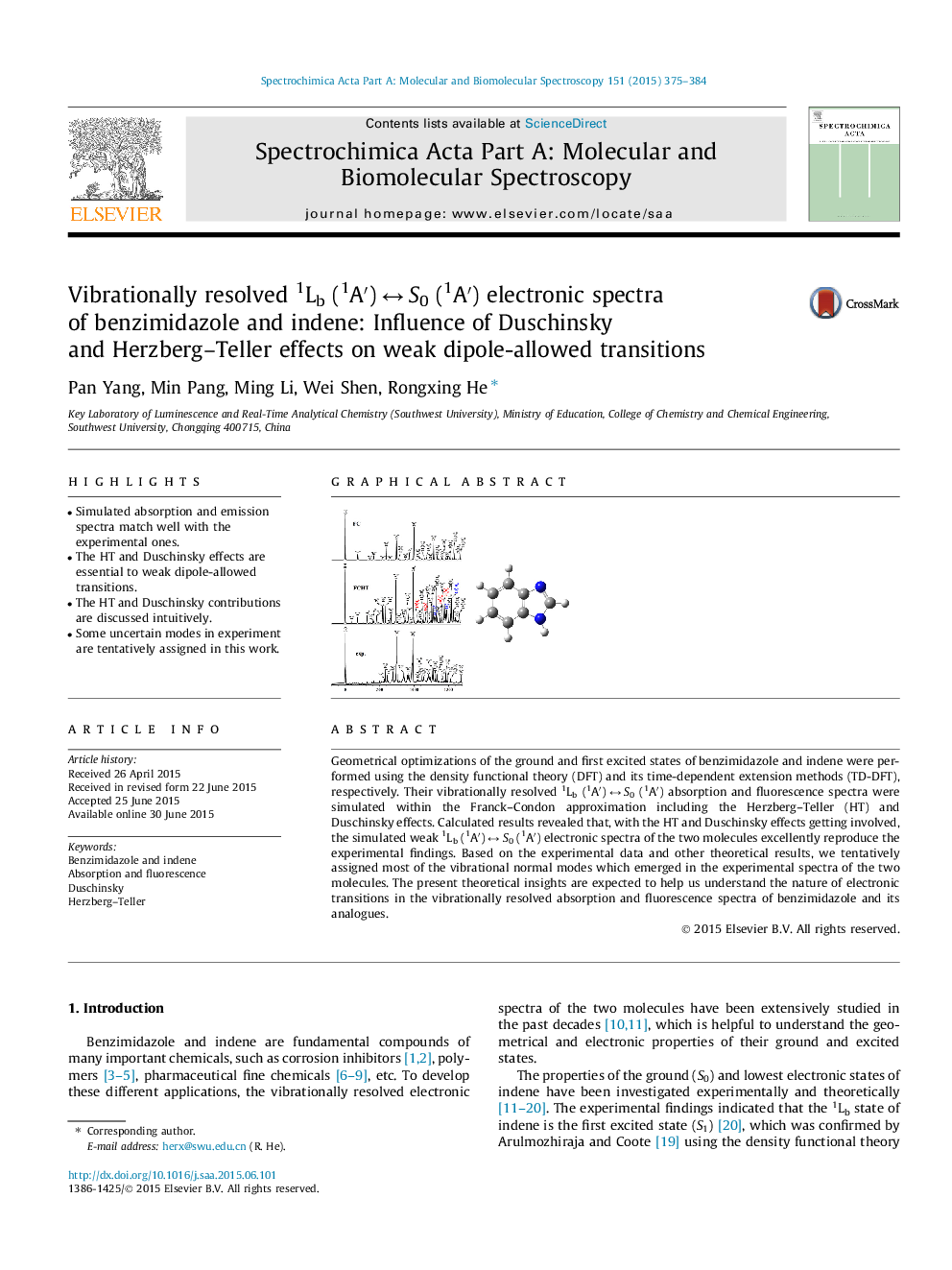| Article ID | Journal | Published Year | Pages | File Type |
|---|---|---|---|---|
| 1230091 | Spectrochimica Acta Part A: Molecular and Biomolecular Spectroscopy | 2015 | 10 Pages |
•Simulated absorption and emission spectra match well with the experimental ones.•The HT and Duschinsky effects are essential to weak dipole-allowed transitions.•The HT and Duschinsky contributions are discussed intuitively.•Some uncertain modes in experiment are tentatively assigned in this work.
Geometrical optimizations of the ground and first excited states of benzimidazole and indene were performed using the density functional theory (DFT) and its time-dependent extension methods (TD-DFT), respectively. Their vibrationally resolved 1Lb (1A′) ↔ S0 (1A′) absorption and fluorescence spectra were simulated within the Franck–Condon approximation including the Herzberg–Teller (HT) and Duschinsky effects. Calculated results revealed that, with the HT and Duschinsky effects getting involved, the simulated weak 1Lb (1A′) ↔ S0 (1A′) electronic spectra of the two molecules excellently reproduce the experimental findings. Based on the experimental data and other theoretical results, we tentatively assigned most of the vibrational normal modes which emerged in the experimental spectra of the two molecules. The present theoretical insights are expected to help us understand the nature of electronic transitions in the vibrationally resolved absorption and fluorescence spectra of benzimidazole and its analogues.
Graphical abstractFigure optionsDownload full-size imageDownload as PowerPoint slide
